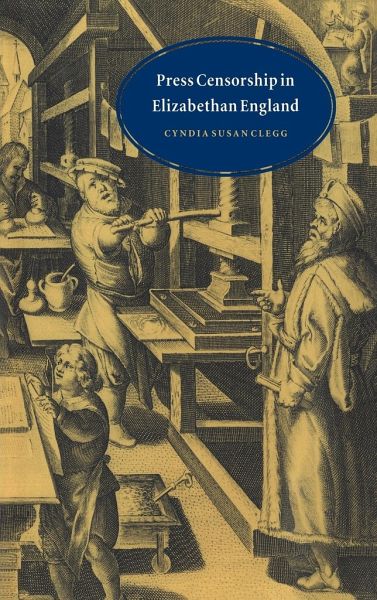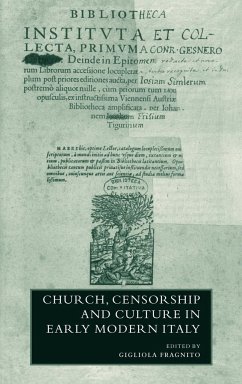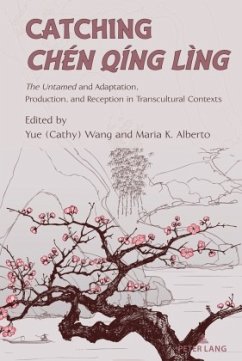
Press Censorship in Elizabethan England

PAYBACK Punkte
52 °P sammeln!
This is a revisionist history of press censorship in the rapidly expanding print culture of the sixteenth century. Professor Clegg establishes the nature and source of the controls, and evaluates their means and effectiveness. The state wanted to control the burgeoning press, but there were difficulties in practice because of the competing and often contradictory interests of the Crown, the Church, and the printing trade. By considering the literary and bibliographical evidence of books actually censored and by placing them in the literary, religious, economic and political culture of the time...
This is a revisionist history of press censorship in the rapidly expanding print culture of the sixteenth century. Professor Clegg establishes the nature and source of the controls, and evaluates their means and effectiveness. The state wanted to control the burgeoning press, but there were difficulties in practice because of the competing and often contradictory interests of the Crown, the Church, and the printing trade. By considering the literary and bibliographical evidence of books actually censored and by placing them in the literary, religious, economic and political culture of the time, Clegg concludes that press control was not a routine nor a consistent mechanism but an individual response to particular texts that the state perceived as dangerous. This will be the standard reference work on Elizabethan press censorship, and is also a history of the Elizabethan state's principal crises.
Table of contents:
Part I. The Practice of Censorship: 1. Privilege, license, and authority: the Crown and the press; 2. Elizabethan press controls; 3. Elizabethan censorship proclamations; Part II. Censored Texts: 4. Catholic propagandists; 5. George Gascoigne and the rhetoric of censorship; 6. John Stubbs's The Discovery of a Gaping Gulf and realpolitik; 7. The review and reform of Holinshed's Chronicles; 8. Martin Marprelate and the puritan press; 9. The 1599 bishops' ban; 10. Conclusion.
This revisionist history of Elizabethan press censorship covers the mechanisms of control and censorship. Clegg sets out the nature and source of the controls, and gives literary and bibliographical evidence of censored books in the literary, religious, economic and political culture. This will be the standard reference work.
Revisionist history of Elizabethan press censorship which covers the mechanisms of control and actual censorship.
Table of contents:
Part I. The Practice of Censorship: 1. Privilege, license, and authority: the Crown and the press; 2. Elizabethan press controls; 3. Elizabethan censorship proclamations; Part II. Censored Texts: 4. Catholic propagandists; 5. George Gascoigne and the rhetoric of censorship; 6. John Stubbs's The Discovery of a Gaping Gulf and realpolitik; 7. The review and reform of Holinshed's Chronicles; 8. Martin Marprelate and the puritan press; 9. The 1599 bishops' ban; 10. Conclusion.
This revisionist history of Elizabethan press censorship covers the mechanisms of control and censorship. Clegg sets out the nature and source of the controls, and gives literary and bibliographical evidence of censored books in the literary, religious, economic and political culture. This will be the standard reference work.
Revisionist history of Elizabethan press censorship which covers the mechanisms of control and actual censorship.














